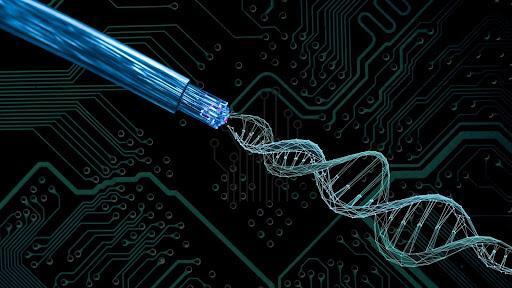
DNA’s Electron Flow May Unlock Future Biocompatible Electronics
In a groundbreaking discovery, researchers have made a significant breakthrough in understanding the electrical properties of DNA, a molecule that has the potential to revolutionize the field of electronics. The findings suggest that DNA’s electron flow can be harnessed to create novel pathways for electron transport, paving the way for the development of smaller, more efficient, and biocompatible devices.
For decades, scientists have been exploring the electrical properties of DNA, with the goal of unlocking its potential for electronic applications. However, the complexity of DNA’s structure and its interactions with electrons have made it a challenging task. Recent studies have focused on understanding the dynamics of electron flow through DNA strands, which has led to a deeper understanding of its electrical properties.
The latest research, published in the journal Nature Communications, reveals that interactions between electrons and molecular vibrations, or phonons, create novel pathways for electron transport through DNA strands. This phenomenon is known as electron-vibration coupling, which has significant implications for the development of biocompatible electronics.
In traditional electronics, electrons flow through metals and semiconductors, which are often prone to corrosion and degradation. In contrast, DNA is a biocompatible material that can be integrated into electronic devices without compromising their functionality or safety. The discovery of DNA’s electron-vibration dynamics highlights its potential as a building block for future electronics, which could lead to the development of smaller, more efficient, and biocompatible devices.
To better understand the electrical properties of DNA, researchers used a combination of experimental and theoretical approaches. They employed advanced spectroscopic techniques, such as scanning tunneling microscopy and atomic force microscopy, to visualize the movement of electrons through DNA strands. They also developed theoretical models to simulate the behavior of electrons and phonons in DNA.
The results of the study revealed that the movement of electrons through DNA strands is influenced by the vibrations of the molecule’s atoms. These vibrations, or phonons, create a dynamic environment that affects the flow of electrons, allowing them to move through the DNA strand in a more efficient and organized manner.
The discovery of electron-vibration coupling in DNA has significant implications for the development of biocompatible electronics. By harnessing the unique electron-vibration dynamics of DNA, researchers may be able to create novel electronic devices that are smaller, more efficient, and safer for human use.
Future applications of DNA-based electronics could include the development of implantable devices for medical applications, such as pacemakers and cochlear implants. DNA-based electronics could also be used to create more efficient and sustainable energy harvesting devices, such as solar cells and biofuels.
In conclusion, the discovery of DNA’s electron-vibration dynamics has opened up new avenues for the development of biocompatible electronics. By leveraging the unique properties of DNA, researchers may be able to create novel electronic devices that are smaller, more efficient, and safer for human use. This breakthrough has the potential to revolutionize the field of electronics, enabling the development of more innovative and sustainable technologies.
News Source:
https://researchmatters.in/news/researchers-study-how-electrons-move-dna-strands-electronic-applications






